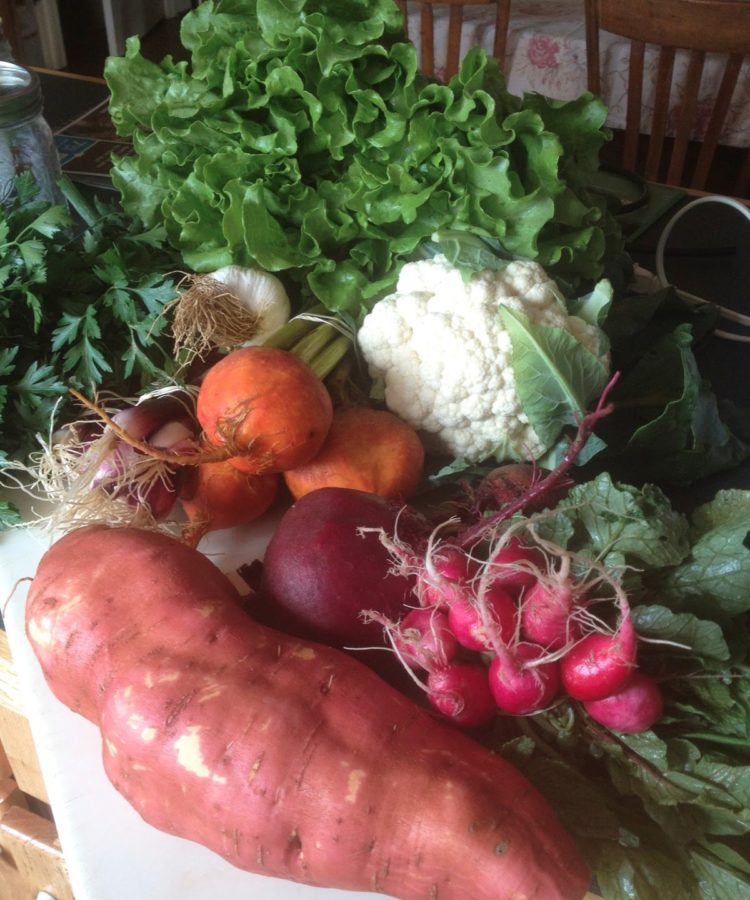Partnering With Our Local Farmers For Good Eats

Addressing these concerns is one of the most innovative ideas to come along in many years: Community Supported Agriculture. Now what, exactly, is meant by that simple three-word phrase? The Community Supported Agriculture concept has been gaining momentum since its introduction to the United States in the mid-1980s. It originated back in the 1960s in Japan, where women interested in safe food for their families, and farmers seeking stable markets for their crops, joined together in economic partnerships. This arrangement, called “Teikei” in Japanese, translates to “putting the farmers’ face on food.” The idea was first adapted to American economic systems and given the name “Community Supported Agriculture” at Indian Line Farm, Massachusetts, in 1985.
Community Supported Agriculture farms are known as CSAs, and essentially a CSA consists of a community of individuals who pledge support to a farm operation by purchasing “shares” or “subscriptions” to the coming year’s harvest. Typically, members or “share-holders” of the farm pay in advance to cover the anticipated costs of the farm operation and the farmer’s salary. In return, they receive shares in the farm’s bounty throughout the growing season. Some CSAs also encourage members to work on the farm in exchange for a portion of the membership costs.
Although CSA agreements are fluid and take many forms, all are based on a shared commitment to building a more secure, local and equitable agricultural system. It is a system that allows farmers to focus on good land stewardship and maintain productive, profitable operations producing a healthy diversity of crops. The CSA arrangement is an important tool in the effort to prevent our smaller farms in the Chesapeakewatershed from being lost to suburban sprawl or swallowed up by huge agri-corporations that have little interest in our local economy or ecology. Members help the farmer pay the up-front costs of seeds, equipment and labor, and in return, the farm provides a healthy supply of seasonal fresh produce throughout the growing season.
Members are assured the highest quality produce, often at below retail prices. In return, farmers and growers are guaranteed a reliable market for a diverse selection of crops. Sounds like a win-win deal doesn’t it? Actually it is. Now this doesn’t totally eliminate the risks involved, but it does spread the risks around a bit. It also gives us a sense of greater rootedness in our own growing region, its weather, and seasons. Perhaps most importantly, it fosters a greater sense of personal responsibility for the health of our soils and of our waters.
Most of our local CSAs are organized around summer and fall member distribution, however more farmers are expanding into year-round CSAs. Winter/spring CSAs offer a shorter duration compared to the longer growing season of the warmer months. A farm that is doing a bang-up job with their winter program is The Zahradka Farm in Baltimore County. They deliver each week to your home or office. And you can make your food selections on their website which is a great convenience. In addition to the product they grow on their farm, they will deliver a selection of local meat, eggs and even citrus grown by a friend of theirs in Florida.
It’s also fun for people who like to cook. Every farm pick-up or drop-off day brings an exciting new challenge. Here are your latest ingredients, now what are you going to create with them? The inevitable season’s bumper crop presents the opportunity to brush up on those forgotten skills like canning, pickling, fermenting and freezing–time-tested ways of preserving nature’s seasonal bounties for later consumption. What could be more satisfying in bleak February than to crack open the jar of tomatoes that you, yourself, “put up” last August and smell the luscious aroma of last summer’s harvest? That’s the way it was always done!
There are a number of well-established, reputable CSAs in our area and now is the time when all of them are lining up their subscribers for the coming year. Here’s just a few located within an hour’s drive of downtown Baltimore:
1 (8 to 10-ounce) chicken breast, grilled or sautéed and cut into cubes (optional)
Heat the oil over medium heat in a heavy-bottomed saucepan or stock pot. Add the onions and sauté for about 3 minutes, or until the onions are slightly translucent. Add the garlic and sauté 2 minutes longer. Add the cabbage and cook for about 5 minutes, stirring often. Add the caraway if using, and the beets. Pour in 6 cups of the stock and bring to a boil. Reduce heat to medium and cook for about 20 minutes. Add the cooked chicken and beans. Continue cooking for 15 minutes. If soup is too thick, thin with the remaining stock.
p.s. Many thanks to my dear friend and local food colleague, Bonnie North, for her help with the CSA research. And I cannot push the “publish” button for this blog post without giving a shout out to Katherine Kozelski for all of her technical and design support.

.jpg)




Be the first to comment.